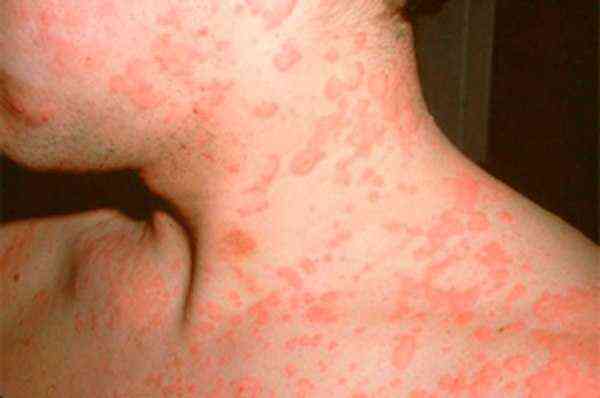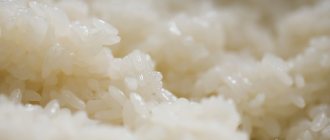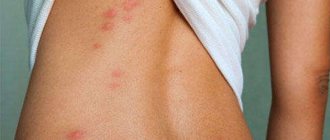Does fever occur with allergies? This question worries those who have a predisposition to this pathology, and every parent who has had to deal with a similar situation in children. In some cases, when allergies occur in children and adults, the temperature may rise.
The reasons are varied, it all depends on the form of the allergic reaction and the individual characteristics of the patient’s body.
Forms of allergies accompanied by fever
Can allergies cause high fever? Developing fever is considered a pathological phenomenon, but is easily correctable and does not always require hospitalization. There are certain forms of allergic reactions that suggest the presence of a febrile state.
It is worth noting that if the temperature level exceeds the permissible values (from 38.5), then we can talk about the presence of an inflammatory process, which the human body is fighting.
The patient's body can react to a variety of stimuli. High fever due to allergies occurs in the following situations:
- If an excessive amount of allergen has entered the body.
- During the process of intoxication.
- After insect bites.
- While taking medications that have a strong effect.
After a fever appears, the attending physician prescribes an allergy test.
If the temperature is elevated due to allergies, this indicates that the immune system is protecting the body and trying to prevent the attack of pathogenic microbes.
What forms of allergies are accompanied by an increase in temperature?
So, fever can occur when:
- Food allergies (excessive consumption of prohibited, dangerous foods).
- An acute reaction to a medication that was not suitable for the patient.
- Carrying out the Mantoux test.
- Vaccinations.
- Angioedema.
- Insect bite.
The following allergy symptoms are distinguished:
- Copious and clear discharge from the nasal cavity.
- The appearance of swelling.
- Increased tear production.
- Redness of the skin.
- Rashes on the epidermis.
- The appearance of itching, burning on the skin.
- Allergic cough.
A high temperature can be caused by a drug allergy, which has the following forms:
- Milian reaction - occurs 8-9 days after taking drugs such as Tetracycline, Metranidazole, sulfonamides, which is accompanied by a strong increase in temperature, possibly even damage to internal organs.
- Drug fever is a condition accompanied by severe fever that occurs 3 days after starting antibiotics.
- Serum sickness – develops after vaccination and administration of various serums. In addition to fever, severe swelling and hives appear.
- Systemic vasculitis.
- Exudative erythema.
- Lyell's syndrome.
- Stephen-Jones syndrome.
Can children have a fever due to allergies? Children often develop hay fever - an allergy to pollen, which is characterized by a severe runny nose and increased tearing.
The process of development of pathology involves an immune inflammatory reaction within the tissues, which contributes to an increase in the thermometer to 37.5 degrees.
Symptoms
The first symptoms of rhinitis of allergic etiology are similar to the signs of infectious diseases. This is why some patients first begin to be treated for a cold and wonder why the symptoms of the disease do not go away and their general condition does not improve.
Signs of the disease include:
- frequent bouts of sneezing;
- severe runny nose - the nose is constantly running; mucus is abundant and mostly transparent;
- lacrimation;
- itching in the eyes;
- conjunctivitis;
- itching in the nasal cavity and throat;
- nasal congestion;
- difficulty breathing through the nose;
- photophobia;
- cough;
- irritability, fatigue;
- sleep problems.
Exposure to allergens in the body can in some cases also cause an increase in body temperature. Let's look at this symptom in more detail.
When the temperature rises

Does it happen that the temperature during allergies reaches critical levels? Unfortunately, in some situations such a clinical picture is the absolute norm.
It is a well-known fact that high temperature is a clear sign that the development of the inflammatory process is beginning. In adults, this symptom occurs much less frequently than in children. Young patients suffer from allergies more severely, since their immune system is not fully formed and cannot fully resist pathogens.
Experts say that heat and fever are not at all characteristic of an allergic reaction. However, in the majority of cases, temperature is the result of a concomitant disease that occurs against the background of this pathology. These can be colds, viral and infectious diseases that cause such an immune response in the child’s body.
What should first aid be?
Whether an allergy can cause fever is an extraordinary question only until the allergy sufferer himself encounters this condition. If appropriate measures are not taken, the temperature may continue to rise, which will negatively affect your well-being. To correct this situation, you should use the following tips to reduce fever.
- Eliminate or minimize contact with the irritating factor.
- Take an antihistamine that was previously prescribed by your doctor. If no drug treatment has been carried out before, you can take Suprastin, Zyrtec or Loratadine in the dosage recommended for age. Most often, the effect of an antihistamine completely eliminates not only the clinical manifestations of the pathology, but also the temperature that accompanies it.
- If an insect bite has been recorded and an allergic reaction has developed almost immediately, it is necessary to rinse the bite site with plenty of running water as soon as possible and treat it with any antiallergic ointment. This will help relieve the local inflammatory process.
- To improve overall well-being, you can take enterosorbents (Activated carbon, Enterosgel, etc.), which help remove toxins from the body. Also, for this purpose, it is advisable to drink clean, still water in sufficient quantities.
- If there is a suspicion that the allergy is caused by a drug, it is necessary to stop using it at least for the next period of time. It is recommended to consult your doctor, who will select an analogue of this drug and rule out additional causes that can cause an increase in temperature in the future.
Main signs of an allergic reaction

When the body is affected by an allergen, not only high fever, but also other symptoms may occur. A manifestation of an allergic reaction is considered to be poor health, lethargy, and a constant desire to sleep.
Significant signs of an allergic reaction include:
- Inflammation of the mucous membranes.
- Peeling of the epidermal layers of the skin.
- Itchy sensations.
- Swelling of mucous tissues.
- Severe changes in blood pressure.
- Intestinal colic, severe diarrhea (with food allergies).
- Headaches that become systematic.
- Increased work of the sebaceous glands - excessive sweating.
- Dermatitis.
- Seborrheic dermatitis.
- Hives.
- Dyspnea.
- The appearance of eczema.
In case of an allergic reaction, the temperature may remain subfebrile (up to 38.5 degrees) or rise to critical levels - in this case, it is necessary to call an emergency medical team.
It is important to look at the body’s reaction, monitor the dynamics of the development of primary signs, and measure body temperature.
What is hay fever?
Hay fever is an allergy to different pollens, for example, trees, flowers. Like an allergy to animal fur, it can be accompanied by lacrimation and a slight rise in temperature (from 37 to 38 degrees). Also characteristic is redness of the eyes, their itching, and swelling. The mucous membranes of the nasopharynx and nose become inflamed. There is a cough, difficulty breathing - difficulty inhaling and exhaling, coughing, sneezing.
Hives also begin on the child’s skin. Often, places such as the neck, arms, legs, that is, parts of the body that are in plain view and not covered, are affected. During the course of the allergic process, children are in a weakened state, they may have a headache, they are often capricious, and refuse to eat.
An allergy to pollen can lead to bronchial asthma, asthmatic bronchitis. What will you have to face if a sick child spends a long time in an environment with pollen? Various consequences are possible: not only are the mucous membranes inflamed, but harmful bacteria are also present, causing more serious diseases, for example:
- sinusitis (the nasal mucosa or paranasal sinuses are affected);
- conjunctivitis (inflammation of the mucous membrane of the eye).
Temperature for allergies in pregnant women
In what situations does a fever occur with allergies in pregnant women? An allergy is a protective reaction of the body in which its tissues are affected; the list also includes acute allergies, which affect 6-8% of pregnant women.
Allergies in pregnant women can be practically harmless and mild in nature:
- Hives.
- Rhinitis.
- Conjunctivitis.

However, there are also severe forms of this pathological process, which are accompanied by high fever:
- Generalized urticaria.
- Quincke's edema.
- Anaphylactic shock.
Fever can reach 39 degrees, such a temperature is dangerous for both the mother and the fetus and requires immediate hospitalization.
During pregnancy, doctors prescribe the following antihistamines:
- Allertek - allowed in the 2nd and 3rd trimester.
- Fexadine.
In some cases, in case of acute vital need, Suprastin and Tavegil can be prescribed, but a negative effect on the fetus is observed.
Features of the disease
Skin pathology can occur already in the early years of life, causing relapses for months and disappearing without a trace after the child’s hormonal maturation. But sometimes the pathology drags on for decades.
With this type of allergy, the condition of young children should be monitored, since in most cases their heat urticaria coexists with other allergic manifestations. In this case, it can serve as a “catalyst” for the development of Quincke’s edema, in which the larynx is blocked by swollen tissues and is fatal for children under three years of age. Therefore, it is always important to know how to deal with such a disease.
If a patient is susceptible to one type of allergy, the disease can always “reincarnate” into another, more dangerous form.
In women suffering from menopausal attacks, expressed in active sweating and “flashes” of heat, heat urticaria can intensify unpleasant symptoms, and vice versa - profuse sweat and even light perspiration on the skin of the chest, face, neck, combined with an increase in skin temperature and dilated blood vessels , can provoke a rash of itchy skin blisters. Such stress further aggravates the patient's condition.
Heat urticaria (photo)

Rashes

In almost all cases, when allergies develop, skin rashes appear. The reaction appears after internal or external contact with an allergen has occurred, which can be:
- Chocolate products.
- Dairy products.
- Nuts.
- Medicines.
- Components of animal fur.
- Washing powders.
- Creams, lotions.
- Fabric from which children's underwear is made.
The rash appears after close contact with the pathogen. For example, severe rashes will appear after a sting of nettles or jellyfish. Mosquito bites will cause a local reaction.
Classification of thermal urticaria
The classification provides for the identification of two forms of thermal urticaria in the disease:
Cholinergic generalized (affecting the entire skin). Local , in which symptoms appear in areas in contact with an aggressive factor).
The first form is often considered separately. The second type is classified as manifestations of contact urticaria, which occurs in response to exposure to physical factors (heat, vibration, sun, cold, water, pressure, trauma).
According to the method of occurrence, they are distinguished:
acute (active) urticaria, the symptoms of which gradually disappear over 6 weeks, and chronic , lasting more than 45 days.
This video will tell you about heat urticaria in detail:
Treatment
With the early development of the disease, it is necessary to correctly develop treatment.
What you need to know to implement proper therapy:
- If the temperature remains subfebrile, that is, does not exceed 38 degrees, then it is not recommended to start taking antipyretics, since the drugs can weaken the level of immune defense.
- Medicines aimed at reducing fever must be taken very carefully, since if there is a reaction to the components included in the medications, a sharp deterioration in the patient’s condition may occur.
- Pharmaceuticals are developing rapidly, and on pharmacy shelves you can choose from many products that contain non-steroidal drugs with an anti-inflammatory effect. However, a person prone to allergies may react negatively to the new multi-component composition.
- Competent experts advise giving preference to rectal suppositories , as they are considered safer and do not contain coloring chemicals or harmful flavors. Everyone knows that sweeteners, taste and aroma enhancers are added to children's medicinal syrups so that it is not difficult for parents to take medicine for their baby.
- First of all, the main irritant is eliminated from the diet , then you need to start giving an antihistamine that suppresses the destructive effects of dangerous substances. The most effective remedies include Suprastin and Claritin; they have a mild effect, have virtually no side effects and give quick results that last a long time.
- If the symptoms are severe and the patient complains of deterioration in health, then it is necessary to call an ambulance . A consultation with an allergist is always required; only he can establish the correct diagnosis, determine the type of allergen and prescribe medication. In some cases, antibiotics are prescribed when different types of bacteria are spreading in the body.
- Since antimicrobial agents negatively affect the gastrointestinal tract, it is necessary to take medications aimed at restoring the internal environment of the intestines, such as Normobact, Linex.
Symptoms. Diagnostics
If the fever is the result of an allergic reaction, it will be accompanied by additional symptoms: sneezing, nasal congestion, watery eyes, swelling of the face or limbs, rash, itching.
An allergist, pediatrician or therapist can diagnose exactly what is causing this condition: an infectious disease or an allergy. In addition, additional evaluation by a gastroenterologist, otolaryngologist, and infectious disease specialist is sometimes required.

To study the situation, the patient must be examined and the parents interviewed to find out what could have caused the reaction. If necessary, additional studies and tests are prescribed. In order to find out which allergen is incompatible with the child’s body, one of the existing research methods can be carried out: a test that is carried out with the direct participation of a person, or a non-contact one.
The first group includes the skin test method. In this case, the allergen is applied to an area of the body - the inside of the elbow or the back, and the child’s condition is monitored. This method is quite cheap. But it has a number of health restrictions that are taken into account during the procedure. It is not done at the time of exacerbation of allergies or a chronic disease, after recent use of hormonal drugs, in severe health conditions, or in cases where the baby has become infected with a viral disease.

Another method involves taking blood from the patient and testing it in a laboratory. This method is similar to a simple blood test, but is much more expensive. The advantage is that you should not overtire the baby within the walls of the hospital. There are no special health restrictions for its implementation. In addition, you will be able to identify both the main allergens and additional ones, and be aware of their presence in the future.

It is worth noting that when determining the cause of a reaction or disease, the doctor may prescribe additional tests in the form of ultrasound, x-rays, etc.
Disease prevention

When a child is found to be susceptible to allergies, it is necessary to take all possible measures aimed at stopping any contact with the pathogen, because with new contacts the severity of the disease will increase and the symptoms will become more pronounced.
If a patient has a food allergy, a thorough examination by an allergist is necessary to help identify the product that causes the negative reaction. A menu is prescribed that excludes dishes with a dangerous component, which will restore and strengthen the body .
Experts do not advise giving a baby prone to negative reactions the following foods during the first year of life:
- Cottage cheese.
- Chicken egg yolk.
- Fish dishes.
Against the background of food allergies, household pollen sensitization can form, which means a strong susceptibility to components and causes other allergic diseases. Therefore, it is important to carry out wet cleaning daily, ventilate the room, and wash children’s toys.
If a negative reaction to a drug or drug has been observed, then it is necessary to notify doctors about this without waiting for the start of treatment for the disease .
Features of the use of antipyretics in children suffering from allergic diseases
Children who are prone to frequent allergic reactions should be given fever medications very carefully. Pharmacies offer a fairly wide range of different children's dosage forms containing NSAIDs (non-steroidal anti-inflammatory drugs), but despite the large selection, parents often encounter problems.
You need to understand that almost all allergic children can have a severe allergic reaction to a new medicine. What do doctors recommend? Allergists-immunologists recommend using candles and tablets with NSAIDs without flavoring in such children.
It should be remembered that the use of acetylsalicylic acid (Aspirin) is prohibited for use in children under 16 years of age.
Multicomponent fever powders are also contraindicated for all allergy sufferers.
Thus, a child’s temperature never excludes the presence of an allergic reaction. But, in any case, parents should show the baby to a doctor for examination, timely diagnosis and treatment.
Forecast
Improvement in the condition of 70% of patients in the acute form occurs in most cases within 2–24 hours, sometimes symptoms gradually subside within 2–3 days. Competent treatment and prevention in chronic cases within 12–18 months leads to an improvement in the condition of 30% of patients.
This video will tell you about the treatment of heat and other types of urticaria:
With the arrival of spring, the sun's rays awaken all living things, making people happy. But at the same time, some people, under the influence of the sun, develop a so-called solar allergy. And this disease affects not only those who came to soak up the sea coast of a hot country or southern Russia, but also residents of the middle zone. Such a specific reaction of the body to ultraviolet rays is not common, but at the same time you need to know the features of this disease, including how to protect your body.

Why does skin react to heat?
All the reasons are unknown to science, but based on the research conducted, we can state the following development factors:
- high susceptibility to histamine, observed in the presence of a true allergy in the medical history;
- endocrine pathologies. It is not known exactly how, but they significantly increase the risk of development;
- high sensitivity to acetylcholine.
Heat allergies are often confused with colds and childhood illnesses that cause a rash, such as chickenpox or rubella. Most often it is affected by:
- children under 12 years of age;
- people with chronic allergies. The more frequent the exacerbations, the higher the risk. After attacks of bronchial asthma and Quincke's edema, you should not overheat;
- pregnant women. They are characterized by increased sensitivity to all stimuli;
- elderly people and those with weakened immune systems;
- inhabitants of northern latitudes. People born in the north do not tolerate heat well.
There is an opinion that the likelihood of a thermal reaction increases with smoking, drinking alcohol, and a sedentary lifestyle, but this has no scientific confirmation. Not only overheating, but also other factors can act as a trigger:
- spicy food. Causes dilation of peripheral blood vessels;
- emotional and physical stress;
- infectious and colds;
- acute stage of diseases of the digestive and endocrine systems;
- autonomic dysfunctions of the brain caused by trauma.











